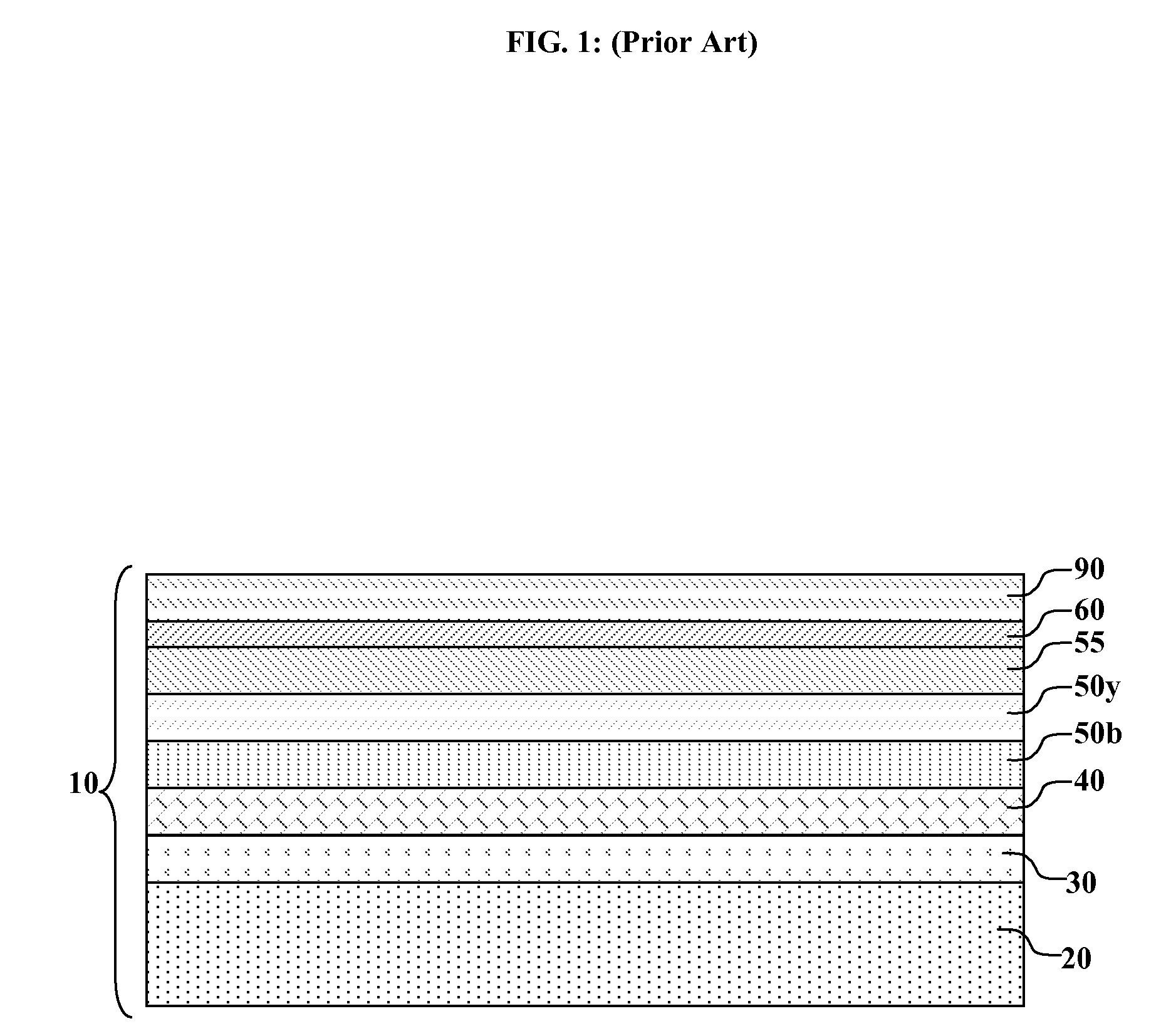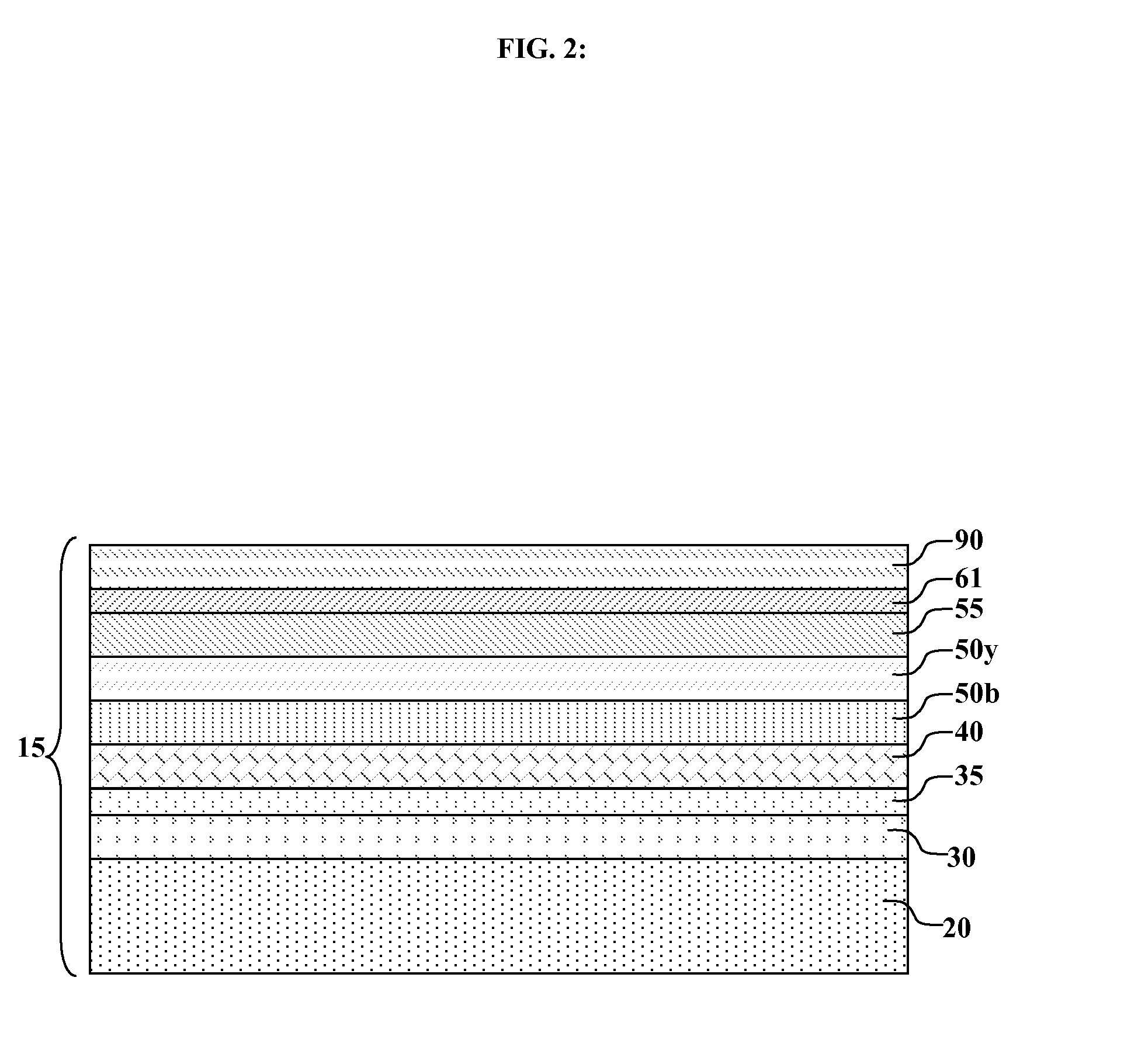Inverted OLED device with improved efficiency
a technology of inverted oled and efficiency, which is applied in the manufacture of electrode systems, electric discharge tubes/lamps, discharge tubes luminescent screens, etc., can solve the problems of difficulty in achieving the desired luminance, the voltage rise over time can be very large in the inverted structure, and the device has not performed very well, so as to reduce the rise of the drive voltage with time.
- Summary
- Abstract
- Description
- Claims
- Application Information
AI Technical Summary
Benefits of technology
Problems solved by technology
Method used
Image
Examples
example 2 (
Inventive)
[0123]An inventive bottom-emitting inverted OLED device was constructed in the following manner:[0124]1. A clean glass substrate was deposited by sputtering with ITO to form a transparent cathode of 85 nm thickness.[0125]2. The above-prepared substrate was further treated by vacuum-depositing a 10 nm layer of CHATP as a second electron-accepting layer.[0126]3. A 40 nm mixed electron-transporting layer was vacuum-deposited, including 49% Bphen, 49% ALQ as co-host, with 2% Li metal.[0127]4. The above-prepared substrate was further treated by vacuum-depositing a 20 nm blue light-emitting layer including 92% NBA host and 7% NPB co-host with 1% tetra-t-butylperylene (TBP) as blue-emitting dopant.[0128]5. The above-prepared substrate was further treated by vacuum-depositing a 20 nm yellow light-emitting layer of 68% NPB (as host) and 30% NBA (as co-host) with 2% PTBR.[0129]6. The above-prepared substrate was further treated by vacuum-depositing a 10 nm layer of NPB as a hole-tra...
example 3 (
Inventive)
[0132]An inventive top-emitting inverted OLED device was constructed as described above for Example 2, except that Steps 1, 3, 6, and 8 were as follows:[0133]1. A clean glass substrate was deposited by vaporizing aluminum metal in an evaporating boat to form a layer of 100 nm thickness, and a 10 nm ITO layer was deposited over this to form a reflective cathode.[0134]3. A 25 nm mixed electron-transporting layer was vacuum-deposited, including 49% Bphen, 49% ALQ as co-host, with 2% Li metal.[0135]6. The above-prepared substrate was further treated by vacuum-depositing a 150 nm layer of NPB as a hole-transporting layer (HTL).[0136]8. The above-prepared substrate was further treated by sputtering ITO to form a 50 nm transparent anode layer.
[0137]As shown in Table 1, the voltage rise for the inventive examples over the lifetime of the device was smaller than for the comparative device.
TABLE 1Device data measured at 20 mA / cm2 (except fade data)Room TempLumFade StabilityEfficienc...
PUM
 Login to View More
Login to View More Abstract
Description
Claims
Application Information
 Login to View More
Login to View More - R&D
- Intellectual Property
- Life Sciences
- Materials
- Tech Scout
- Unparalleled Data Quality
- Higher Quality Content
- 60% Fewer Hallucinations
Browse by: Latest US Patents, China's latest patents, Technical Efficacy Thesaurus, Application Domain, Technology Topic, Popular Technical Reports.
© 2025 PatSnap. All rights reserved.Legal|Privacy policy|Modern Slavery Act Transparency Statement|Sitemap|About US| Contact US: help@patsnap.com



